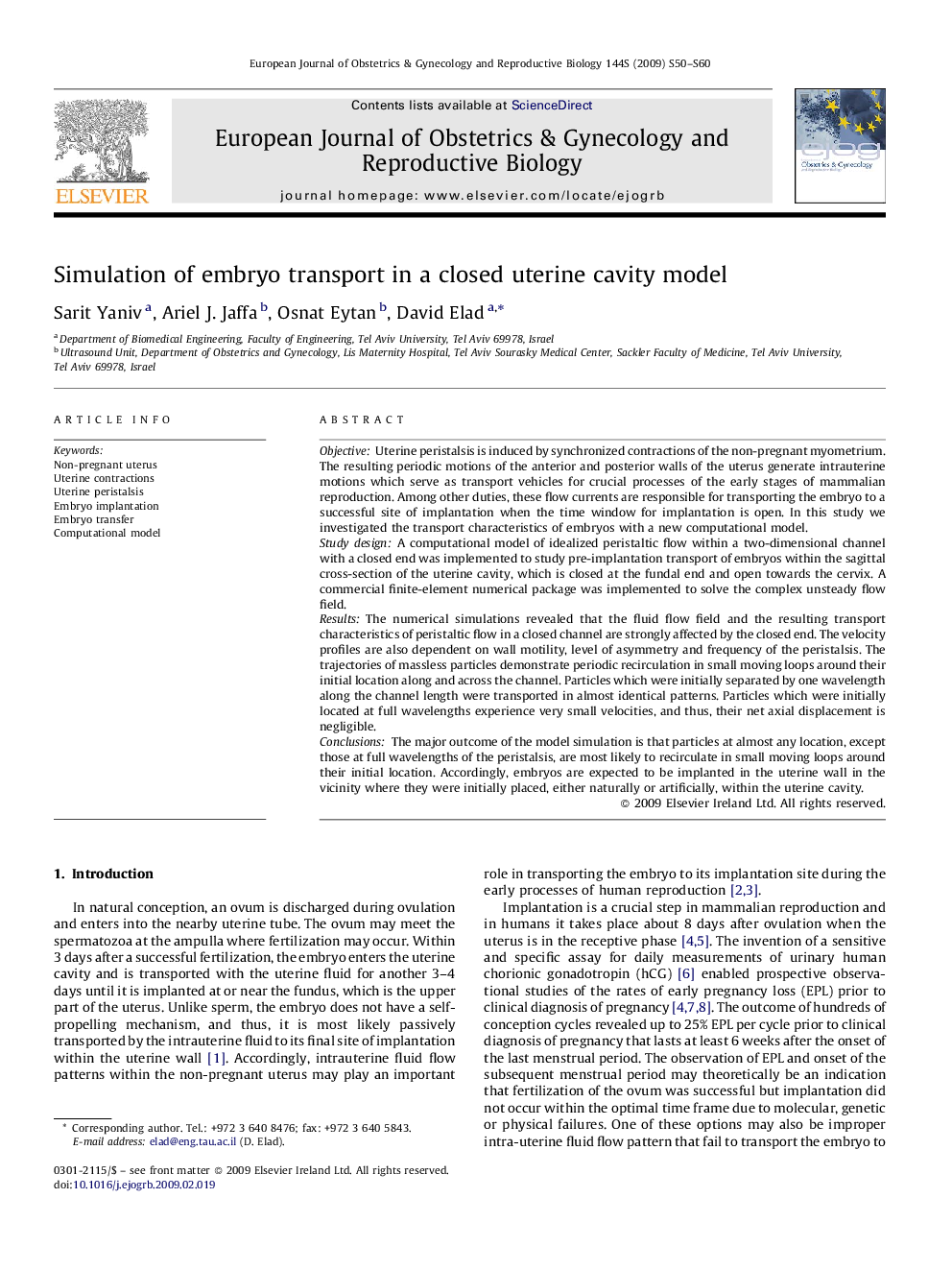| کد مقاله | کد نشریه | سال انتشار | مقاله انگلیسی | نسخه تمام متن |
|---|---|---|---|---|
| 3921009 | 1599866 | 2009 | 11 صفحه PDF | دانلود رایگان |

ObjectiveUterine peristalsis is induced by synchronized contractions of the non-pregnant myometrium. The resulting periodic motions of the anterior and posterior walls of the uterus generate intrauterine motions which serve as transport vehicles for crucial processes of the early stages of mammalian reproduction. Among other duties, these flow currents are responsible for transporting the embryo to a successful site of implantation when the time window for implantation is open. In this study we investigated the transport characteristics of embryos with a new computational model.Study designA computational model of idealized peristaltic flow within a two-dimensional channel with a closed end was implemented to study pre-implantation transport of embryos within the sagittal cross-section of the uterine cavity, which is closed at the fundal end and open towards the cervix. A commercial finite-element numerical package was implemented to solve the complex unsteady flow field.ResultsThe numerical simulations revealed that the fluid flow field and the resulting transport characteristics of peristaltic flow in a closed channel are strongly affected by the closed end. The velocity profiles are also dependent on wall motility, level of asymmetry and frequency of the peristalsis. The trajectories of massless particles demonstrate periodic recirculation in small moving loops around their initial location along and across the channel. Particles which were initially separated by one wavelength along the channel length were transported in almost identical patterns. Particles which were initially located at full wavelengths experience very small velocities, and thus, their net axial displacement is negligible.ConclusionsThe major outcome of the model simulation is that particles at almost any location, except those at full wavelengths of the peristalsis, are most likely to recirculate in small moving loops around their initial location. Accordingly, embryos are expected to be implanted in the uterine wall in the vicinity where they were initially placed, either naturally or artificially, within the uterine cavity.
Journal: European Journal of Obstetrics & Gynecology and Reproductive Biology - Volume 144, Supplement 1, May 2009, Pages S50–S60